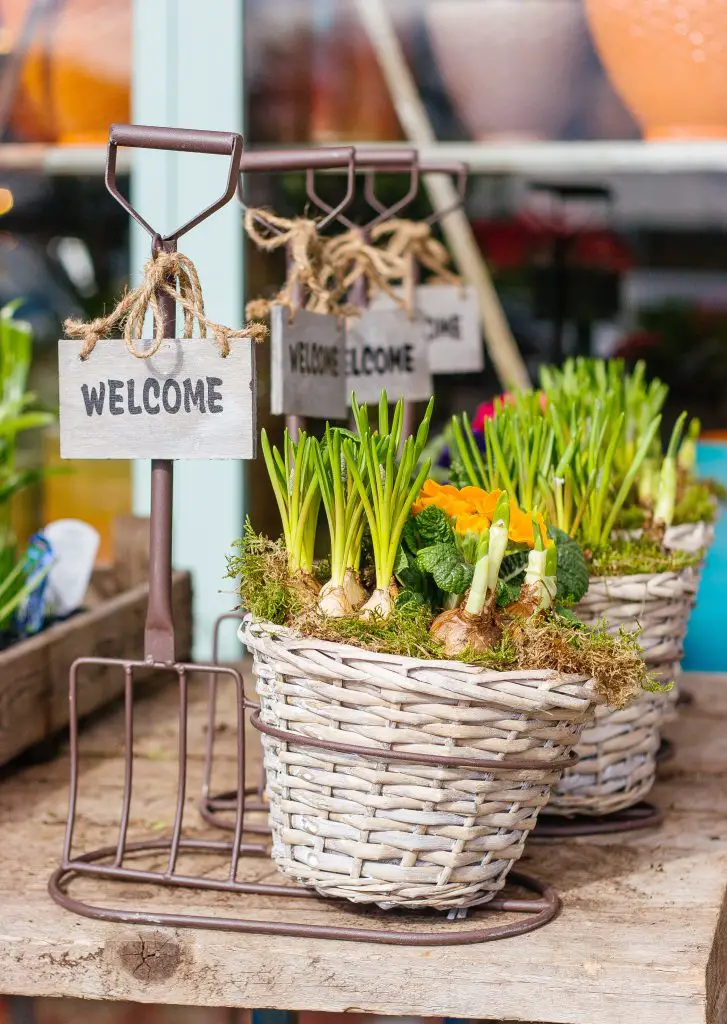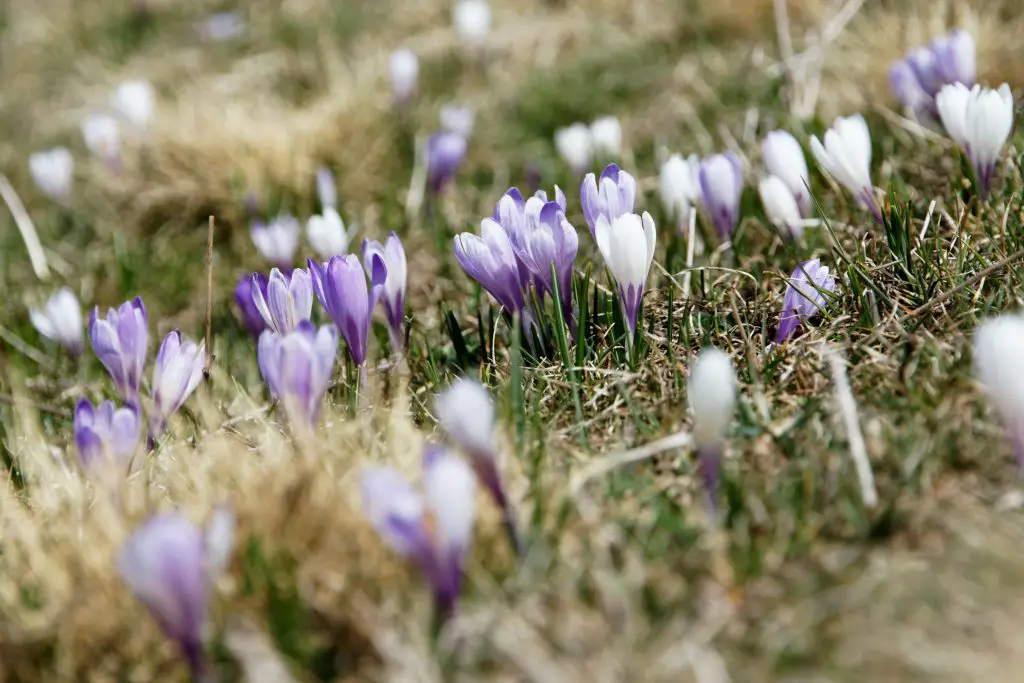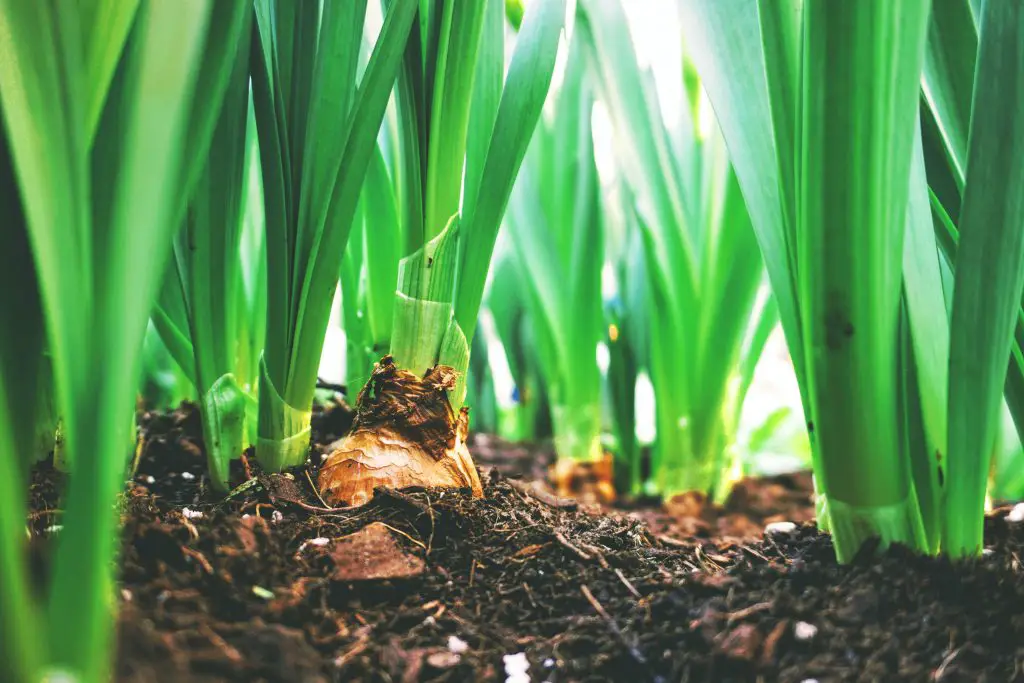Can You Plant Bulbs In Spring? For those gardeners that love flowers, planting bulbs in the garden is one way to increase the level of interest at different stages during the year. But when is the best time to plant bulbs? Have I missed the boat in spring with bulb planting?
Bulbs can be planted in spring and they will produce a flower this season provided that they are Summer or Autumn flowering bulbs, such as Autumn Crocus. However, most of the plants that we traditionally think of when thinking bulbs, such as daffodils, snowdrops, and tulips, are spring-flowering bulbs, which will not produce a flower if they are planted at that time of the year.
About the latest, you can plant spring-flowering bulbs is in mid-winter, however for bulbs to successfully flower they need to be exposed to a period of cold, so if they are stored indoors at temperatures greater than 45°F (7°C) during the autumn and winter months they are unlikely to flower. Gardeners living in warmer climates often trick spring-flowering bulbs into thinking they have had a cold winter by storing them in the fridge.

Which Bulbs Are Summer Flowering?
When talking about adding bulbs I like to extend the definition to include plants with rhizomes, tubers, and corms which is basically anything that dies back in winter and has some sort of subterranean plant mass that will appear in the following summer or spring. I take this approach because most gardeners are concerned with filling gaps within their garden or adding a splash of color rather than the specific root form of the plant.
To provide an indication of which plants flowers when a table is provided below which includes all the “bulbs” flowering period. To get a good idea of what the plants looks like I have included links to www.garden.net which has details about each of the plants.
| Plant | Bulb/Corm/Tuber/Rhizome | Flowering Period | Comment |
| Chionodoxa | Bulb | Early Spring | Chionodoxa (Chionodoxa luciliae) is also known as Glory of the Snow |
| Crocus | Corm | Early Spring | There are 2 types of spring-flowering crocuses: snow crocus or wild crocus |
| Iris Reticulata | Bulb | Early Spring | Known as the Dwarf Iris with grass-like foliage and blue or purple flowers |
| Scilla Siberica | Bulb | Early Spring | This variety is sometimes referred to as blue snowdrops |
| Snowdrops | Bulb | Early Spring | A small white flower that faces downward and is less than 4 inches tall |
| Winter Aconite | Bulb | Early Spring | Bright Yellow bulb that is approximately 4 inches tall |
| Early Daffodils | Bulb | Early Spring | There is a range of Daffodils that flower at different times, not just early spring. Early varieties include ‘Barrett Browning’, ‘Tête-á-Tête’, ‘February Gold’, ‘Little Gem’, ‘Topolino’ and ‘Rijnveld’s Early Sensation’. |
| Early Tulips | Bulb | Early Spring | Most tulips reach their peak display in late April and May, but by choosing early-flowering varieties, you can enjoy blooms from March. Varieties include ‘Apricot Beauty’, ‘Van der Neer’, ‘Chato’, ‘Orange Emperor’, ‘Verona’, and ‘Purissima’. |
| Anemone Blanda | Corms | Mid Spring | Anemone Blanda produces small daisy-like flowers that have yellow centers with either blue, pink, or white petals. |
| Midseason Daffodils | Bulb | Mid Spring | There is a range of Daffodils that flower at different times, not just early spring. Mid-season varieties include ‘King Alfred’, ‘April Queen’, ‘Peeping Tom’, ‘Professor Einstein’, ‘Ice Follies’, and ‘Mount Hood’. |
| Hyacinths | Bulb | Mid Spring | Hyacinths bloom in mid-spring at the same time as daffodils and early tulips and produce 4 to 6-inch compound flowers which come in white, cream, Red/Pink, and Purple/blue. |
| Mid Season Tulips | Bulb | Mid Spring | Midseason Tulips typical flower around April, common varieties include ‘Affaire’, ‘Barcelona’, ‘Helmar’, ‘Apricot Foxx’, and ‘Princess Irene’. |
| Muscari | Bulb | Mid Spring | Muscari is commonly known as grape hyacinths, describes the appearance well as they look like an upside-down grape cluster. |
| Fritillaria | Bulb | Mid Spring | Fritillaria is commonly referred to as the snake’s head fritillary of just the snake’s head and it comes in a range of colors including, Purple, Green, Red, Orange White, and yellow. |
| Late Daffodils | Bulb | Late Spring | There is a range of Daffodils that flower at different times, not just early spring. Late-season varieties include ‘Quail’, ‘Cheerfulness’, ‘Yellow Cheerfulness’, and ‘Flower Record’. |
| Dutch Iris | Bulb | Late Spring | Dutch iris, also known as Iris hollandica, have flowers that look similar to orchids and are relatively tall (2 ft) with colors that range from blue through to yellow. |
| English Bluebells | Bulb | Late Spring | English Bluebells, also known as wood hyacinths, are woodland plants that produce low growing flowers that are blue, pink, or white |
| Spanish Bluebells | Bulb | Late Spring | The Spanish bluebell can tolerate sunshine whereas the English bluebell prefers at least partial shade and is never found growing in open spaces. |
| Leucojum | Bulb | Late Spring | Leucojum, also known as a summer snowflake has a similar appearance to snowdrops. |
| Late Tulips | Bulb | Late Spring | Late season Tulips typically flower around in May, common varieties include ‘Angelique’, ‘Ballerina’, ‘Cafe Noir’, and ‘Don Quichotte’. |
| Ranunculus | Bulb | Late Spring | There is a wide range of species that are sometimes referred to as buttercups, spearworts, or water crowfoots. |
| Eremurus | Tuber | Early Summer | Eremurus is also known as the foxtail lilies or desert candles. The plant produces a long spike that looks similar to a bottlebrush that consists of many flowers that can be copper, bright yellow, snow-white pink, or orange. |
| Camassia | Bulb | Early Summer | Camassias, are sometimes referred to as wild hyacinth or Indian hyacinth. They produce tall spires of blue, white, or pink star-shaped flowers. |
| Early Lilies (Asiatic) | Bulb | Early Summer | Asiatic lilies reach mature heights of 1 to 6 feet and are available in a wide variety of bold colors. |
| Iris (Ensata & Louisiana) | Bulb | Mid Summer | Iris ensata, commonly called Japanese iris grows 2 to 4 ft tall. The flowers are relatively large, 4 to 6 inches across, and it comes in a range of colors including purple, red, pink, and white. |
| Gladiolus | Corms | Mid Summer | Gladioli produce graceful spires that are similar to foxgloves and hollyhocks. They typically reach a height of 4 to 6 ft tall and come in a range of colors that includes white, yellow, red and purple. |
| Liatris | Corms | Mid to Late Summer | Liatris flowers form long the tall spikes that are 1 to 5ft tall with fuzzy, thistle-like blossoms on the end that are most commonly blue in color. The spikes emerge from a shrub-like plants that have grass-like leaves. |
| Caladiums | Tuber | Mid to Late Summer | Unlike most of the other plants in this list, Caladiums are grown for their foliage rather than the flowers. These plants produce variegated leaves that come in a range of color combinations of green and orange, white or red |
| Calla Lilies | Rhizome | Mid Summer to Fall | Calla lilies have distinctive trumpet-like shaped flowers that come in a range of colors such as white (a favorite for weddings), yellow, orange, pink, rose, lavender, and dark maroon. |
| Crinum | Bulbs | Mid Summer to Fall | Crinum lilies thrive for decades with little care as long as they’re in the right location. They grow best in part shade but tolerate about any amount of light. |
| Acidanthera | Corm | Late Summer | Acidanthera is a member of the gladiolus family and is sometimes called a Peacock Orchid. The plants have fragrant white flowers and sword-like foliage that is 1 to 2 ft tall. |
| Hymenocallis | Bulbs | Late Summer | Hymenocallis are known by many other names including also known as Sacred Lily of the Incas, Spider Lily, and the Peruvian Daffodil. The plant produces a central flower that is sometimes trumpeted with narrow curing outer petals that give the plant a spider-like appearance. |
| Oriental Lilies | Bulbs | Late Summer | Oriental lilies are typically 3 to 6 feet tall and produce heavily fragranced flowers that are often speckled. |
| Canna Lily | Rhizome | Late Summer to Fall | Canna Lillies are a plant that is grown for its tropical foliage as much as its flowers. Most plants reach a height of 4 to 6 ft and are available in a range of flower colors including red, orange, and yellow. |
| Crocosmia | Corms | Late Summer to Fall | Crocosmias are tall plants that have sword-like green foliage that is 4 to 6 ft tall that produce striking orange, pink and sometimes yellow flowers. |
| Nerine | Bulbs | Late Summer to Fall | Nerine also known as Guernsey Lily, produces tall erect flower stalks bearing 5 to 10 funnel-shaped flowers that come in a range of colors which include white, pale pink, and scarlet red. |
| Dahlias | Tuber | Late Summer to Fall | Dahlias are an extremely popular plant that comes in a huge range of flowers types that varieties in size from 2 inches to 10 inches. |
| Autumn Crocus | Corm | Late Summer to Fall | Autumn crocus which is also known as the meadow saffron is a low growing flower that looks similar to the Spring Crocus that is used to produce saffron, however, this plant is toxic. |

What Is The Best Time To Plant Summer/Autumn Flowering Bulbs?
Whether the plant comes from a rhizome, a bulb, a corm, or a tuber they are best planted out in the early to mid-spring usually when to risk of frost has passed, this is because pretty much all the plants do not tolerate frost. However, it is possible to plant them a week or two before the last frost as the plants will not emerge for a few weeks.
I have generally found that trying to plant early has little benefit as plants generally don’t flower much earlier because the growth rate when the temperatures are cool tends to be quite slow. The other disadvantage of the plant early is that in a lot of locations the conditions tend to be wetter, increasing the chances of the bulb or tuber rotting.
Most summer and autumn flowering bulbs can be planted at any stage throughout spring and in some cases, they can be planted out as late as early summer if the plant is a late flowering bulb.

How To Plant Bulbs
Bulbs, corms, and tubers are quite straightforward to plant. They need to be planted at a depth of 4 to 6 inches deep. This can be done using a spade however if you are planting a lot of bulbs and corms you should consider investing in a bulb planter. There are short-handled bulb planters that are relatively cheap and also long-handled versions that cost a little more but will save your back. The longer handle ones are also easier to use when the ground is relatively firm because you can use your foot to drive the bulb planter into the ground. Click on the links to see the latest price on Amazon.
In terms of locations, as all of the plants are flowering, they require a sunny location that gets at least 6 to 8 hours of sun per day. Most of these plants will prefer moist but well-drained soil and soggy areas should be avoided in most cases as there is potential for the bulb/corm/tuber to rot in the ground. However, there are a few exceptions to this such as certain types of iris which do well at the edge of ponds.
Once the bulbs have been planted it is advisable to apply a thick layer of mulch to suppress weed and improve moisture retention. After this most bulbs require very little maintenance until the plant flowers. Once the plants have finished flowering it is advisable to wait until the foliage has died back before cutting it back to the ground.
If you live in a location where the winter is cold it may be necessary to dig up the bulbs and bring them inside. If this is required it is best to store the bulbs, corms, and tubers in either peat moss or damp sand. Storing them in this medium will prevent moisture loss which ensures the plant will remain in good condition for next year.
